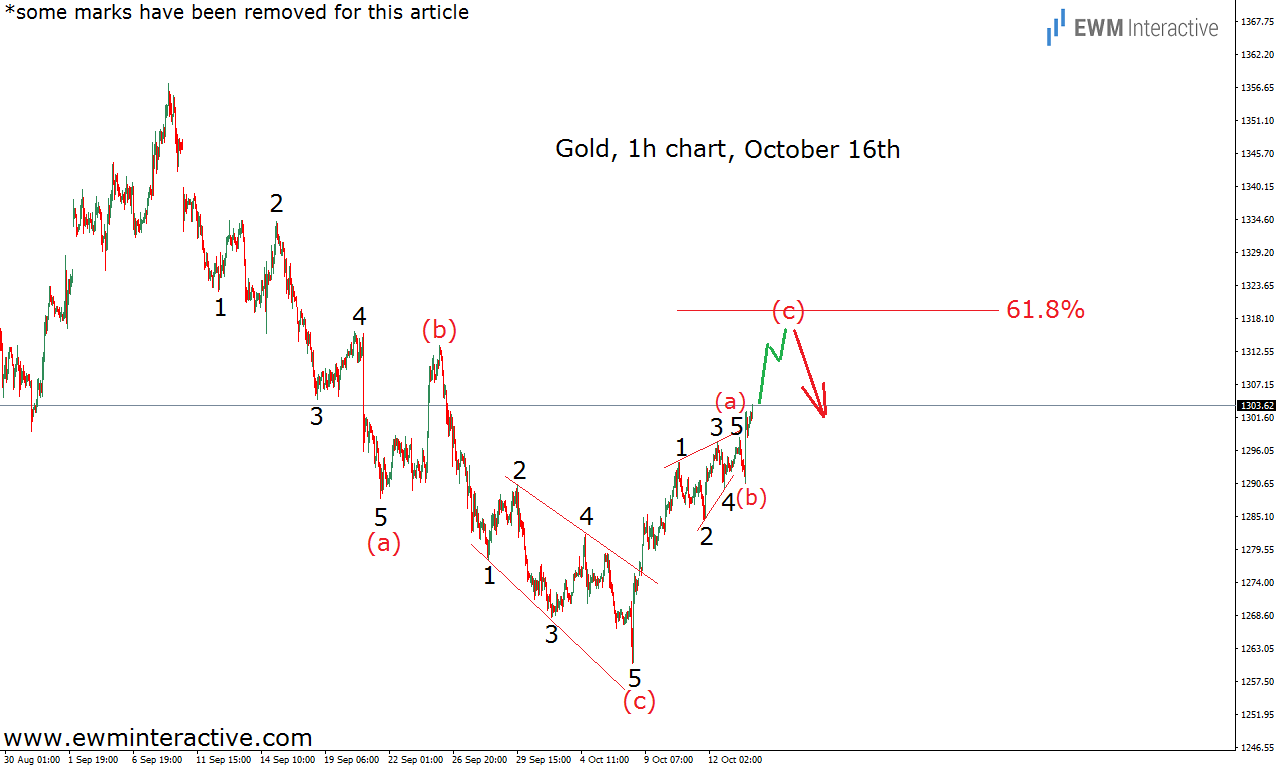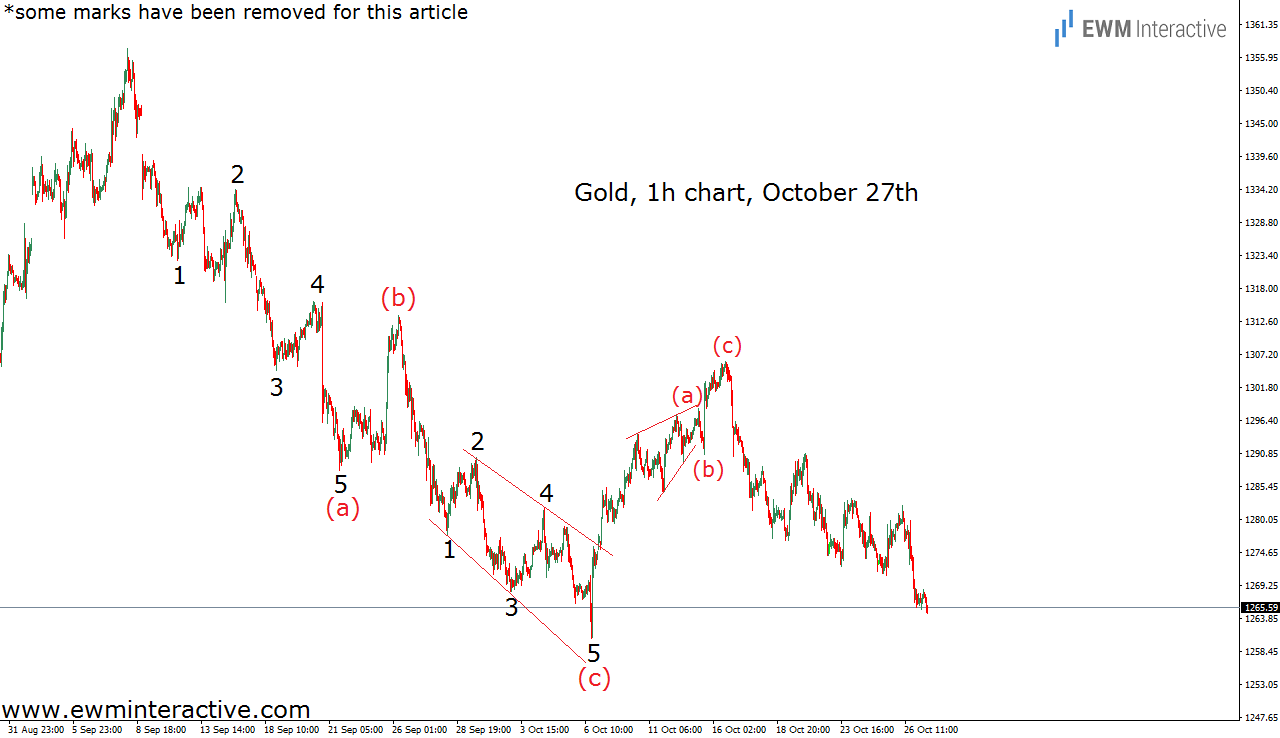Gold’s last major bottom was formed at $1260.50 on October 6th, following a decline from as high as $1357. By October 16th, the price of the precious metal was up to $1306 for a recovery of over $45. But instead of continuing to the north, the bulls could not breach this barrier and fell pray to the bears, who dragged gold prices to as low as $1265 as of this writing. What happened at $1306 and why did the bulls abandon their ambitions so quickly?
Two trading weeks ago, before the market opened on Monday, October 16th, we sent 7 analyses to our premium subscribers, including one of gold. The following chart was included.

As visible, the decline between $1357 and $1260 was a simple (a)-(b)-(c) zig-zag with a regular five-wave impulse in wave (a) and an expanding ending diagonal in wave (c). After we took a look at the bigger picture on the daily chart, we though the recovery from $1260 was also going to be limited to a three-wave sequence. Since three-wave patterns are counter-trend moves, it made sense to prepare for more weakness once the recovery was over. The 61.8% Fibonacci level looked like a reasonable area for the bearish reversal to take place, so we suspected gold should at least climb to $1310. The bears did not think so.
$1306 was the best wave (c) was capable of. After that, it did not take long for gold prices to start plunging. Ten trading days and over $40 to the south later, gold trades in the mid-$1260s. Thanks to the Elliott Wave Principle, this is not such a big shock, despite Trump-North Korea, Catalonia and all the other political reasons suggesting gold should rise. Because quite often, the price patterns are much more important than the news.
